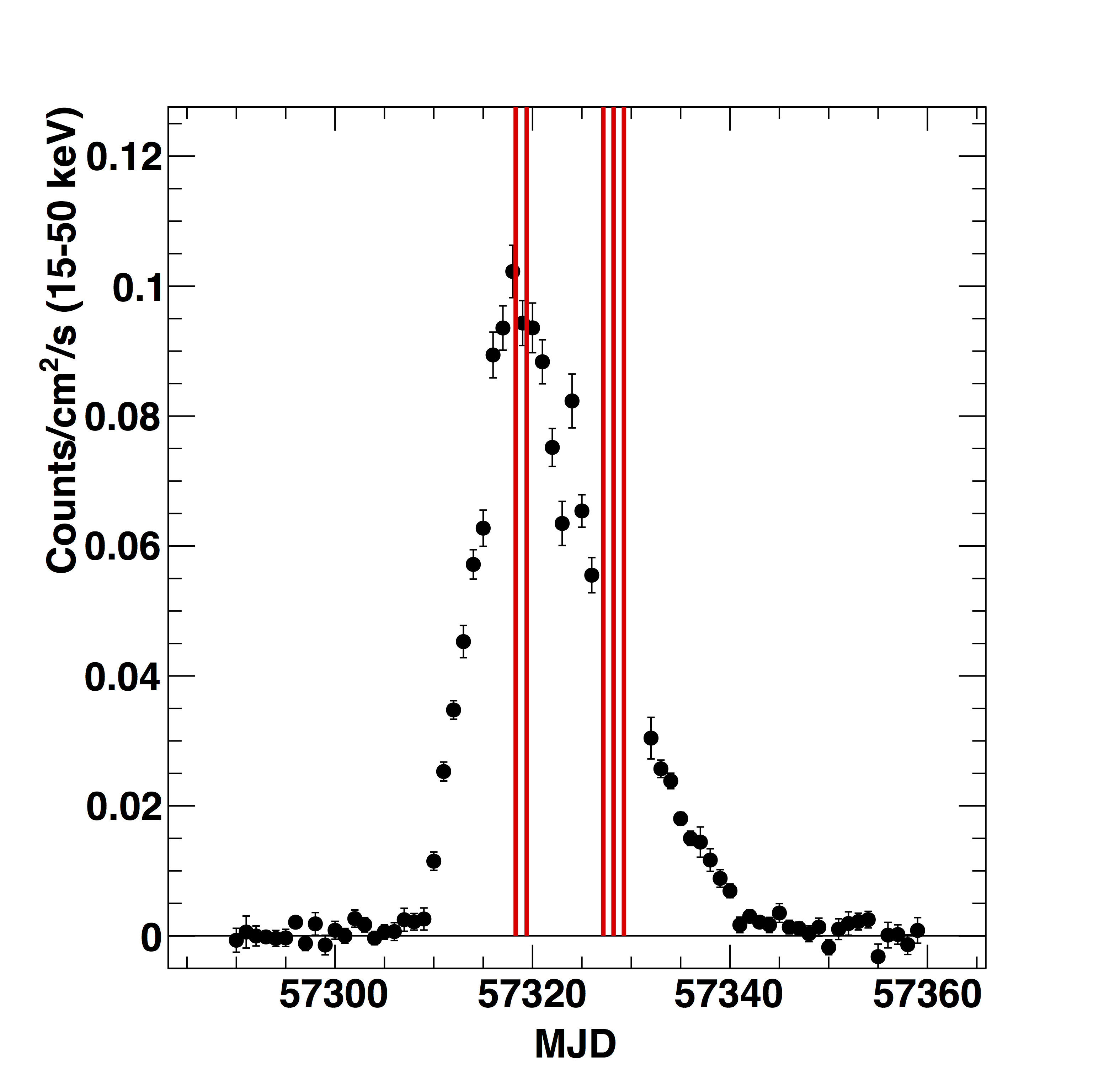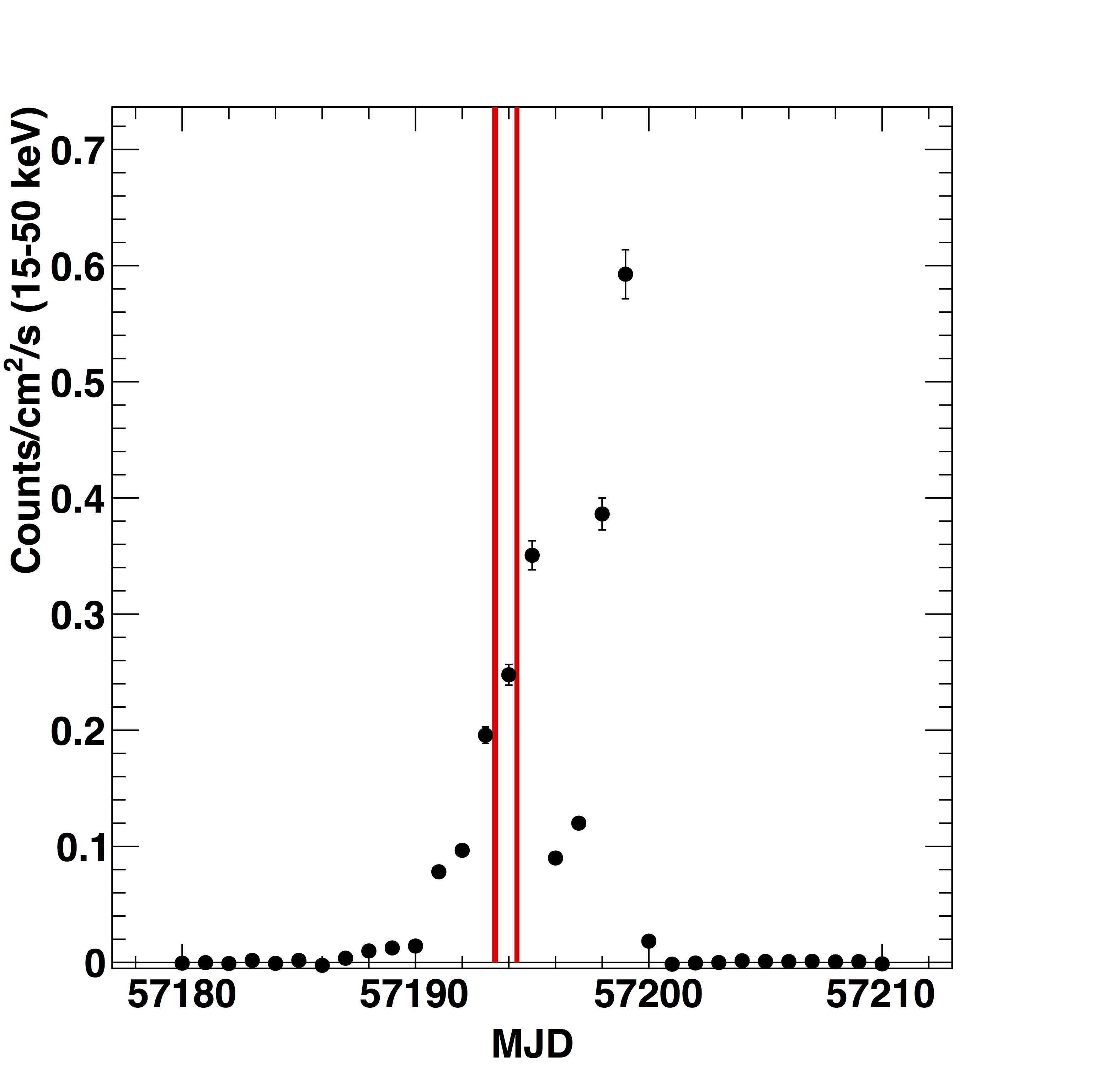
Reference: A. Archer et al. (The VERITAS Collaboration), Astrophysical Journal xxx: yyy, 2016
Full text version
ArXiv: ArXiV:1608.06464
Contacts: Gernot Maier
Transient X-ray binaries produce major outbursts in which the X-ray flux can increase over the quiescent level by factors as large as 107. The low-mass X-ray binary V 404 Cyg and the high-mass system 4U 0115+634 underwent such major outbursts in June and October 2015, respectively. VERITAS observed these binaries at energies above several hundreds of GeV during some of the brightest X-ray activity ever observed. No gamma-ray emission has been detected by VERITAS in 2.5 hours of observations of the microquasar V 404 Cyg from 2015, June 20-21. The upper flux limits derived from these observations on the gamma-ray flux above 200 GeV of F < 4.4 x 10-12cm-2s-1 correspond to a tiny fraction (about 10-6) of the Eddington luminosity of the system, in stark contrast to that seen in the X-ray band. No gamma rays have been detected during observations of 4U 0115+634 in the period of major X-ray activity in October 2015. The flux upper limit derived from our observations is F < 2.1 x 10-12 cm-2 s-1 for gamma rays above 300 GeV, setting an upper limit on the ratio of gamma-ray to X-ray luminosity of less than 4%.
FITS files:
Figures from paper (click to get full size image):


